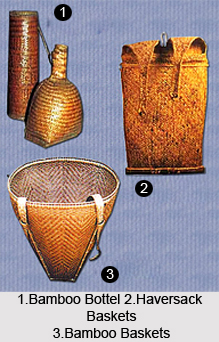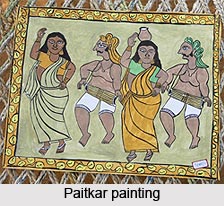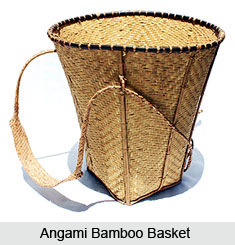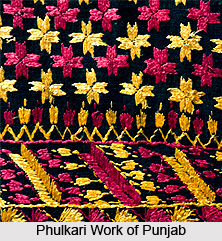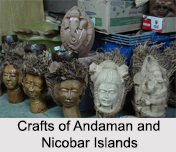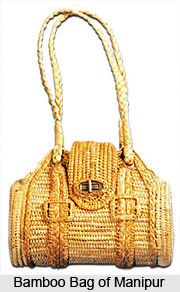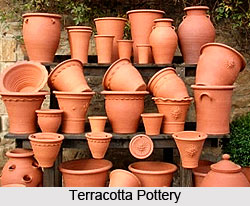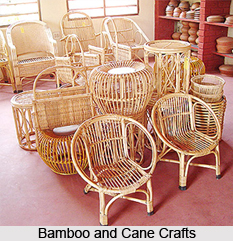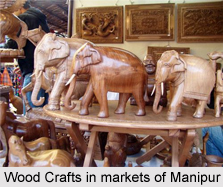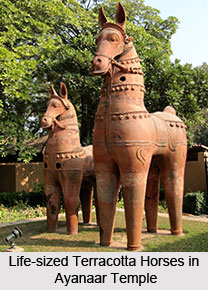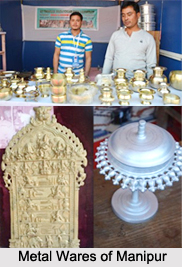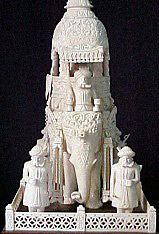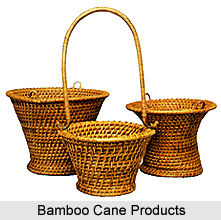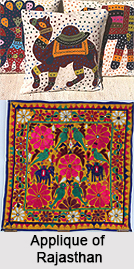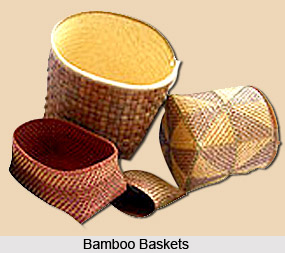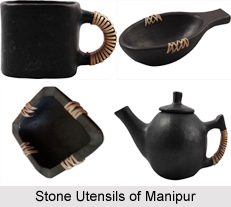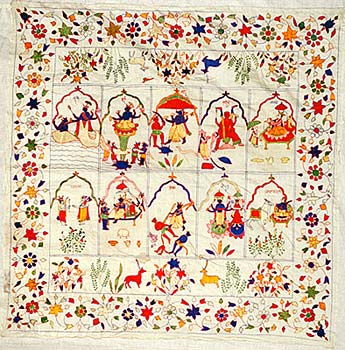Introduction
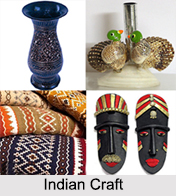 Indian Crafts are known throughout the world for their artistic work and grandeur. The deeply entrenched tradition of Indian Craft echoes the true colour of India whilst impressing generation after generation amidst their varied forms and styles. For people around the world, India is synonymous to exotic arts and handicraft traditions. A wide range of traditional Indian craft reflects the richness of Indian ethnic art and culture. The designs and finishes represent the excellent artistic skills of the craftsmen.
Indian Crafts are known throughout the world for their artistic work and grandeur. The deeply entrenched tradition of Indian Craft echoes the true colour of India whilst impressing generation after generation amidst their varied forms and styles. For people around the world, India is synonymous to exotic arts and handicraft traditions. A wide range of traditional Indian craft reflects the richness of Indian ethnic art and culture. The designs and finishes represent the excellent artistic skills of the craftsmen.
Indian Craft tradition has no parallel in the world, in diversity as well as in technique and use of materials. The craft traditions of India vary from region to region. These crafts not only cater to the day-to-day needs of the people but are also used for decorative and religious purposes.
Origin of Indian Crafts
Indian Craft thrive to be the amalgamation of socio-political via religious influences that mapped India with the onward march of time and space. The spirit of indigenous India allied with the western advancement lie at the core of Indian Craft zone. The intriguing history and the fascinating past presently counts for the origin of Indian Crafts. The tradition of Indian craft has whirled around religious values, cultural influx, confined needs of the commoners, as well as the special needs of the clientele and royalty, along with an eye for overseas and home trade. Indian Craft is an enigma of arts and science; the art requiring talent and technique, and science relying on the knowledge within.
History of Indian Craft
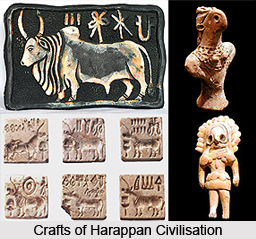 The history of Indian Handicrafts is an old saga. There are a myriad of craft traditions in India. The crafts which flourished in India are basically subject to the social, economic and regional factors. The present status of craft in India owes much to the rich craft traditions of the past. Most of the crafts from the past continue to boom due to their utilitarian nature, their availability to the common people and popularity in domestic and foreign markets. The special needs of the patrons and royalty with vivid eye on foreign and domestic trade became the focal point of crafts of Indian subcontinent. Till date it is continuing to boom owing to the assimilating nature of Indian culture. Highly accommodative nature of the craftsmen to accept and use new ideas is also responsible for the growth of Indian crafts.
The history of Indian Handicrafts is an old saga. There are a myriad of craft traditions in India. The crafts which flourished in India are basically subject to the social, economic and regional factors. The present status of craft in India owes much to the rich craft traditions of the past. Most of the crafts from the past continue to boom due to their utilitarian nature, their availability to the common people and popularity in domestic and foreign markets. The special needs of the patrons and royalty with vivid eye on foreign and domestic trade became the focal point of crafts of Indian subcontinent. Till date it is continuing to boom owing to the assimilating nature of Indian culture. Highly accommodative nature of the craftsmen to accept and use new ideas is also responsible for the growth of Indian crafts.
Ancient history of Indian crafts
The primal references of Indian crafts were found in the remnants of Indus Valley Civilization (3000 B.C.-1700 B.C.). The Indus valley civilization had a rich craft tradition. It has also got a technical brilliance in the arena of pottery- making, jewelry, threading, various sculptures like metal, stone, terracotta etc. A lot of material information from excavations at Harappa, Mohen-jo-daro etc. corroborates the craft tradition of the Indus valley civilization. The craftsmen supplied basic needs of the locales and also excess items were exported to ancient Arabian countries mainly through voyages.
The rich heritage of Indus Valley Civilization was perfectly incorporated in the Vedic era, starting from 1500 B.C. There is no dearth of references in the Vedic literature where instances of artisans involved in pottery making, weaving, wood crafting etc, are being duly mentioned. Especially the Rig Veda refers to a variety of pottery made from clay, wood and metal. It also mentions about lot many weavers and weaving of the then period.
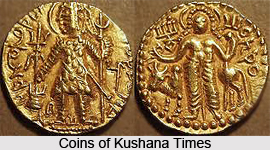
Growth of Crafts during Ancient India
Tamil states were the largely increasing era in the history of crafts and trade in ancient India. In Karimnagar in Telangana, carpenters, blacksmiths, goldsmiths, potters lived in part quarters and undeveloped and other labourers lived at one ending. Eight crafts were connected with the working of gold, silver, lead, tin, copper, brass, iron, and precious stones or jewels. A variety of types of crafts associated with cheek, zinc, antimony and red arsenic are also stated. Technological facts about iron work had made huge development and iron pieces have been determined in large numbers. The Telangana area of Andhra seems to have been the affluence in this respect and in accumulation to weapons, balance rods, sickles, ploughshares, razors and ladles have been discovered in the Karimnagar and Nalgonda districts of this area.
Mathura was a vast hub for the manufacture of a particular type of cloth which was called shataka. The manufacture of oil boosted because of the exercise of the oil wheel. The dedications of the age state weavers, goldsmiths, dyers, workers in metal and ivory, jewellers, sculptors, fishermen, smiths and perfumers as constructors of caves and also as donors of pillars, tablets, cisterns, etc. to the Buddhist monks. Indian ivories have been found in Afghanistan and Rome. They are related to ivory objects found in excavations at Satavahana sites in the Deccan. A coin shape from a Satavahana level demonstrates that it could produce half a dozen coins at a time. Coin moulding and other city handicrafts were complemented by the construct of beautiful pieces of terracotta, which flourish at several places. Most artisans recognized from inscriptions were confined to the Mathura province and to western Deccan which lay on the trade routes leading to the ports on the western coast.
Medieval history of Indian crafts
Artistic production of crafts, too, proliferated during Mauryan Empire, a landmark in Indian history, starting from 3rd century B.C. It is believed that during the time of Ashoka, 84,000 stupas were constructed in India. The "Sanchi stupa" is a part of it and has gained worldly fame for its beautiful stone carving and relief work. Wearing fashionable jewelries was in vogue. Several sculptures were found in Bharhut, Mathura, Amravati, Vaishali, and Sanchi regions depicting female figures decked up in beautiful jewelries bear a proof of this. The iron pillars of Vaishali and Delhi, created during the time of Emperor Ashoka, are a spectacle of metallurgical works.
Influence of Dynasties on the Medieval Indian Craft
The craft of each state in India reflect the influence of different empires. The Medieval Indian Craft witnessed a number of influential dynasties appearing and ameliorating the Indian craft. One of the influential dynasties that played the vital role in Indian craft was Chola dynasty that flourished in South India. The popularity of bronze metal in the Chola period was a continuation of the style and technique of the Andhra. One of the techniques that the Cholas patronized was the lost wax process, used for Indian bronzes. This indeed was one of the striking examples of the artistry of the Medieval Indian Craft.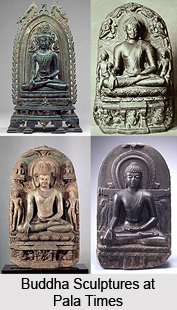 The contribution of the Cholas and the Vijayanagar Empire in the field of bronze craft, silk weaving, jewellery, temple carving is beyond parallel. A famous craftsmanship of Medieval Indian Craft was the great image of Shiva-Nataraja in his cosmic dance pose which not only symbolises the creation and destruction of the universe, but is considered a visual sermon of sorts by the devotees. The Chalukyan Empire had splendid instances of the craft on hard rock. This culture continued in the later dynasties like Rashtrakuta dynasty, Pallava dynasty etc.
The contribution of the Cholas and the Vijayanagar Empire in the field of bronze craft, silk weaving, jewellery, temple carving is beyond parallel. A famous craftsmanship of Medieval Indian Craft was the great image of Shiva-Nataraja in his cosmic dance pose which not only symbolises the creation and destruction of the universe, but is considered a visual sermon of sorts by the devotees. The Chalukyan Empire had splendid instances of the craft on hard rock. This culture continued in the later dynasties like Rashtrakuta dynasty, Pallava dynasty etc.
Indian crafts in Buddhist period
The foreign invaders, leaving aside their tradition of cultural and traditional glories, ennoble the history of crafts of India. The time period was during 1st century B.C and 1st century A.D .The impact of these intrusions can be noticed in the Buddhist sculptures from Taxila, Begram, Bamiyan, Swat valley, etc. A high degree of Greek influence is immensely found, especially in the statue of Buddha, having curly hair and wearing draperies. The same trend is maintained in the sculptures of the Kushana king Kanishka. These originated in the same period, depicting the influence of the central Asian Culture on Indian craftsmanship. Other exquisite craft pieces, namely, jewellery, textile making, leather products, metal working etc. inherited these influences and also absorbed them in accord to the Indian scenario.
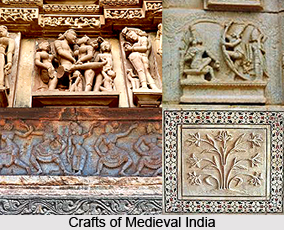
Indian crafts in Gupta period
The golden age of Guptas (AD 320-647) is not only esteemed the classical period in Indian history and that too of history of Indian crafts. The rock cut temples of Ellora and the Ajanta murals are perfect examples of it. These wall paintings throw us a realistic view of the lifestyle of that time. Another interesting feature is that it underwent evolution under the patronage of Gupta kings, excelling in jewelry making, woodcarving, sculpture, stone carving, and weaving.
Indian crafts in Mughal period
The craftsmen under the Delhi Sultanate period prospered in the fields of pottery, weaving, wood carving, metal working, jewelry etc. Mughal era was the golden period in the history of craft. The Mughals brought with them a rich heritage, which they had adopted from Persian territories. They imparted new techniques like inlay work, glass engraving, carpet weaving, brocades, enameling etc. The Mughal miniature paintings also disposed influence of the traditions of many Indian schools of paintings like Rajasthani, the Kangra, Pahari etc. The famous Peacock Throne of the Mughals is one of the premium examples of precious stone decorative work and metal craft. They also laid the foundation for a host of many craft traditions and also the famous Mughal miniature painting. Petra dura or inlay work is a unique example, perfectly beautified with jewellery.
Techniques Applied on the Medieval Indian Craft
During the medieval era, new techniques like inlay work; glass engraving, carpet weaving, brocades, enamelling etc were introduced in Indian. The famous Peacock Throne of the Mughals is one of the finest examples of gem inlay work and metal craft. This dynasty promoted the creation of enamelled jewellery and a host of other craft traditions. The royal clans of this era enabled the craftsmen to take the Indian craft to an unprecedented height. Along with this promotion and development of jewel craft was also paid due heed. India, thus, developed as a major source and trading centre for precious stones and intricate jewellery designs. Some of the most appraised jewellery craft of Mughal era were Bidriware and Meenakari craft.
Bidriware: Bidriware is valued for its fine craftsmanship. Its sleek and smooth dark coloured metal work with intricate eye-catching designs on its glossy surface is famous all over the world.
Meenakari: Another craft which is the Meenakari craft, is the continuation of the art of enamelling or fixing colour by melting in fire which had been practised in India ever since the ancient times.
The medieval period introduced many techniques for colouring ornaments and other objects of gold and silver and also other metallic objects made of copper, brass etc. Jaipur was most famous for enamelling work on gold, followed by Varanasi, Alwar and Delhi, Multan, Shang and Kangra; whilst Bahawalpur, Kashmir, Kulu etc. had traditions of enamelling on silver. Throughout centuries, crafts have been embedded as a culture and tradition within rural communities.
With the demolition of the Mughal dynasty, the medieval period ends. The post Mughal era introduces colonial rule, the reign of the British. The initiation of the colonial period ensured the establishment of the modern or contemporary era that ushered the Western influences on the Indian craft.
History of crafts in South India
The Medieval period of Indian history is significant in the context of development of crafts. It expanded its aura to Southern region after capturing the market of the whole of northern territories of India. The contribution of the Cholas and the Vijaynagar Empire in the field of bronze sculpture, silk weaving, jewellery, temple carving still remains invincible. The fine example of stone carving from central India can be seen in the form of the Khajuraho Temples, built by the Chandelas. Rich and ornate wood and stone carving can be found in medieval temple of Jagannath at Puri in Odisha.
Modern history of Indian crafts
In present day scenario, growth and development of crafts in India is no less significant. Each and every Indian state has its own unique culture, their own designs, colors, materials in use and individual shapes and patterns, which is demonstrated in the Sholapith from West Bengal, handicrafts of that particular region. For instance, Kashmir is known for its Pashmina wool shawls as well as carpets, silverware, ivory works etc. North-Eastern and Eastern states like Assam and West Bengal are far-famed for their exquisite `Sholapith` and `Shital Patti` works. Others regions are acclaimed for crafts pieces, namely, Karnataka for its rosewood carving, sandalwood crafts etc. The engraved and enameled meenakari brassware found in Rajasthan, silk materials from Varanasi and Kanchipuram, colorful embroidery, mirror work, quilting and fabric painting from Gujarat etc. are some of the exclusive crafts popularized not only in India and also abroad. Stone crafts are in thing and few regions are popular for crystals and semi precious stones. The contemporary crafts vary from products like bed sheets, table mats, napkins, household furnishings etc. These instances of art made out of different textile and the usage of masterly printing range from tie and dye, block printing, hand printing etc. are in great demand now a days.
Crafts in Modern India
There is a huge domestic market for a hoard of utilitarian craft items such as bedcovers, sheets, cushions, curtains, tablemats, bags, metal furniture, mats, boxes, cabinets, wood furniture, toys, utensils, garden pots, terracotta items, brass and silverware, leather products, papier-mâché products, cane, jute and coir items, carpets, rugs, durries etc. The craft items are fabricated with a touch of modernity keeping in mind the demand of the present trend. Most of the units producing utilitarian craft items have attained the status of small-scale industry.
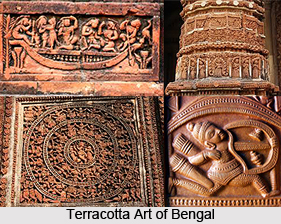
The market of art and craft ensures the demand for decorative items such as traditional wall hangings, silver cutlery, brass pots, embellished wooden sculptures, marble and wood inlay work, silk carpets, wrought iron furniture and decorative pieces, traditional paintings, enameled furniture, stone and wood carvings, metal, wood and stone sculptures etc. are also on the rise in India and abroad as well.
Carpet weaving industry is the largest export oriented craft industry from India. There is a great demand for costly silk carpets from Kashmir, which has become the status symbol in traditional Indian homes. Moreover, the exclusive woolen and non-woolen carpets also appeal the modern customers and the admirers of art. A variety of floorings and traditional durries are flooding the markets these days and decorating the floors of Indian homes.
Having maintained a rich cultural and traditional inheritance, the crafts testify the integral part in the life of an Indian, despite the rapid social and technological changes that are taking place. There is a timeless quality in these craft objects, for they have evolved over centuries and continue to be made even today with the same sentiment. The craft, commenced in the primeval age has been praised and appreciated by the regale of kings and even the contemporary people.
Development of Indian Craft
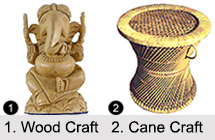 Pre-historically Indian handicrafts were basically made for day after day use, the yearning for aesthetic application soon saw development of flooding designs and motifs. Indian textiles, permanent dyes had their far flung supremacy in ancient India; silk was exported from India to Europe in the 6th century A.D. Mughal era witnessed the patronage of brilliant artisans and craftsmen endowed with magical bliss and as a result Mughal carpets, ivory-bones-horns cravings and papier mache. Akbar, Shah Jahan, Jahangir invited the skilled artisans from all over the globe. With them breezed in their native art forms and Indian handicrafts sojourned to its pinnacle of perfection. The disintegration of the Mughal Empire even led to the rapid down fall in the craft industry as the later lost its powerhouse of patronage. Later, with the East India Company engaging in trade with India, Indian crafts were ousted, and decreased in volume. Indian markets were flooded with machine made goods from Europe. Later Swadeshi movement under Mahatma Gandhi`s able leadership adhered to the dawn of reawakening for the plight of Indian craftsmen.
Pre-historically Indian handicrafts were basically made for day after day use, the yearning for aesthetic application soon saw development of flooding designs and motifs. Indian textiles, permanent dyes had their far flung supremacy in ancient India; silk was exported from India to Europe in the 6th century A.D. Mughal era witnessed the patronage of brilliant artisans and craftsmen endowed with magical bliss and as a result Mughal carpets, ivory-bones-horns cravings and papier mache. Akbar, Shah Jahan, Jahangir invited the skilled artisans from all over the globe. With them breezed in their native art forms and Indian handicrafts sojourned to its pinnacle of perfection. The disintegration of the Mughal Empire even led to the rapid down fall in the craft industry as the later lost its powerhouse of patronage. Later, with the East India Company engaging in trade with India, Indian crafts were ousted, and decreased in volume. Indian markets were flooded with machine made goods from Europe. Later Swadeshi movement under Mahatma Gandhi`s able leadership adhered to the dawn of reawakening for the plight of Indian craftsmen.
Contemporary Indian Crafts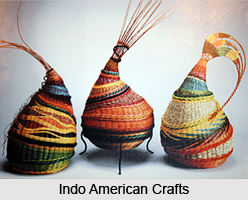 Contemporary Indian Craft offered a whole new facet to the Indian craft whilst taking it to a new height. It started its journey in the twentieth century with the emergence of Mahatma Gandhi. Gandhiji, popularised the use of desi garments that included khadi, cotton, etc and led to the renaissance of the village craft. This, in turn, expanded the growth of Indian craft. Towards the end of British Raj, thus, the cotton industries formed the most powerful sector and alongwith the traditional groups of Mumbai which comprises Wadia, Tata, there was a spectacular growth of groups at Ahmedabad as well which include Kasturbhai, Sarabhai, Mafatlal; and North India which encompassed Shri Ram, the controller of Delhi cloth Mills, J.K Singhaia at Cownpore. The Marwaris made a spectacular entry into the jute and trade industry at that time. The freedom movement gained momentum and finally drove the British out of India in 1947. During the British era, India was overwhelmed with the influence from different regions like Dutch, British and French.
Contemporary Indian Craft offered a whole new facet to the Indian craft whilst taking it to a new height. It started its journey in the twentieth century with the emergence of Mahatma Gandhi. Gandhiji, popularised the use of desi garments that included khadi, cotton, etc and led to the renaissance of the village craft. This, in turn, expanded the growth of Indian craft. Towards the end of British Raj, thus, the cotton industries formed the most powerful sector and alongwith the traditional groups of Mumbai which comprises Wadia, Tata, there was a spectacular growth of groups at Ahmedabad as well which include Kasturbhai, Sarabhai, Mafatlal; and North India which encompassed Shri Ram, the controller of Delhi cloth Mills, J.K Singhaia at Cownpore. The Marwaris made a spectacular entry into the jute and trade industry at that time. The freedom movement gained momentum and finally drove the British out of India in 1947. During the British era, India was overwhelmed with the influence from different regions like Dutch, British and French.
Indian craft paced a step further after the independence. The amalgamation of the western craft pattern ideally gelled with the native form whilst making contemporary Indian craft to stand apart. The government started to adopt a serious stance towards the Indian craft. Various aids were granted and the Indian craft and art developed as the time proceeded. In response to such efforts the craftsmen of India fascinated with the designs of the hybrid "Anglo-Indian" furniture. These were famous amongst the British as well as the Indians during the British period. These antique furniture are still in demand. The sophisticated commissioned pieces, made from precious materials, represent the artistry of the Indian of craftsmanship. These exquisite pieces are appealing to collectors even today because they combine a familiar form with exotic materials and decoration.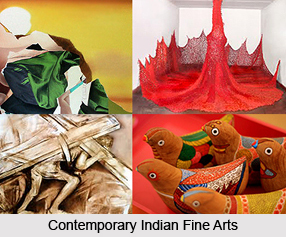 Moreover, in spite of absence of royal patronage, contemporary Indian craft traditions have acquired the mantle of small-scale and cottage industry. Some of the sectors within the craft industry have even become full scale large industries like carpet weaving, traditional textile (Banarsi silk sari, Chikankari etc), gem cutting and polishing, jewellery making, the world famous diamond cutting and polishing industry, jute products, brassware, etc. These industries are growing due to the ever-increasing demand and popularity of Indian crafts in the domestic market and abroad. Carpet making, gems and jewellery, leather products, jute products etc. are some industries, which are expanding rapidly. In fact the present status of craft in India owes much to the rich craft traditions of the past. Most of the crafts from the past continue to flourish due to their utilitarian nature, their availability to the common people and popularity in domestic and foreign markets.
Moreover, in spite of absence of royal patronage, contemporary Indian craft traditions have acquired the mantle of small-scale and cottage industry. Some of the sectors within the craft industry have even become full scale large industries like carpet weaving, traditional textile (Banarsi silk sari, Chikankari etc), gem cutting and polishing, jewellery making, the world famous diamond cutting and polishing industry, jute products, brassware, etc. These industries are growing due to the ever-increasing demand and popularity of Indian crafts in the domestic market and abroad. Carpet making, gems and jewellery, leather products, jute products etc. are some industries, which are expanding rapidly. In fact the present status of craft in India owes much to the rich craft traditions of the past. Most of the crafts from the past continue to flourish due to their utilitarian nature, their availability to the common people and popularity in domestic and foreign markets.
Contemporary Indian craft emerged with the progression of time, and it has improved its technique of artistry. One such craft is the Indian embroidery. There is a great demand for rich brocades and `zari` work in the Indian states. The repertoire of saris ranges from Banarasi Amru, Tanchoi from Surat, Paithani, Patola, Kanjeevaram to the cotton saris from the tribal regions of Bihar and Madhya Pradesh etc, to delight the modern Indian woman. There is a profusion of materials available to the consumers to get a variety of garments made of different silks and mixed fabrics. Richly embroidered garments, woven shawls and household items are in fashion these days. Mainly craftsmen from Kashmir, Punjab, Gujarat, Rajasthan, Madhya Pradesh, North Eastern states etc create these products. There is a flourishing market for `pherans` and `tablecloths` from Kashmir. Woolen shawls from Himachal and North Eastern states are also popular. The items like bed sheets, table mats, napkins, household furnishings etc made out using the various styles of textile printing ranging from tie and dye, block printing, hand printing etc. are intricately designed maintaining the past tradition.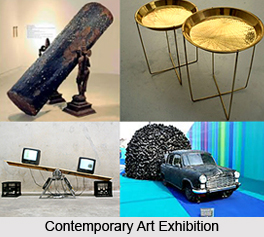
Apart from these, gems and jewellery also play a vital role in Indian culture and contemporary Indian crafts. This obsession is strong till date and India has become the largest importer of gold in the world. A variety of local jewellery traditions (of different states) are present in India with the modern day gem and diamond cutting and polishing industry. The present day jewellery tradition of India has become more refined and polished and is a fine example of assimilation between traditional and modern designs and techniques. The increasing demand for Indian jewellery and gems has made this craft tradition into a full-fledged large scale organized industry, which is growing by the day.
Another most important part of contemporary Indian craft is carpet weaving industry which is the largest export oriented craft industry from India. Not only there is a great demand for costly silk carpets from Kashmir, but there is also demand for woolen and non-woolen carpets. A variety of floorings and traditional durries are flooding the markets these days and decorating the floors of Indian homes.
The government of India encourages handicraft which include a hoard of utilitarian craft items such as bedcovers, sheets, cushions, curtains, tablemats, bags, metal furniture, mats, boxes, cabinets, wood furniture, toys, utensils, garden pots, terracotta items, brass and silverware, leather products, papier-mâché products, cane, jute and coir items, carpets, rugs, durries etc. such endeavours have led to a steady growth in the craft industry of contemporary India. Most of the units producing utilitarian craft items have attained the status of small-scale industry. The demand for decorative items such as traditional wall hangings, silver cutlery, brass pots, embellished wooden sculptures, marble and wood inlay work, silk carpets, wrought iron furniture and decorative pieces, traditional paintings, enameled furniture, stone and wood carvings, metal, wood and stone sculptures etc. is also on the rise in India and abroad.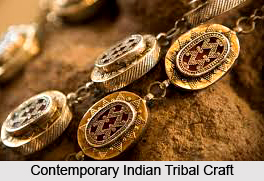 The present trend allows the revival of past tradition and craft, thus allowing the contemporary Indian craft to amalgamate the western style of craft, with a touch of past designs and a trendy finishing. For instance, the traditional craft of Uttar Pradesh is `dhurrie` that had been woven for centuries in the villages of the state. It has been a major design statement by a judicious choice of colours, a better combination of the traditional patterns, but most of all by marketing it in the West, as a hand-made product. Not only that but a whole range of floor coverings in jute, sisal, kora grass, and other natural fibres, wool and even waste materials, have been part of this trend. The craft of embroidery, an allied part of the textile wealth of the country has also been reinvigorated by the designers, who have worked with traditional craftsmen.
The present trend allows the revival of past tradition and craft, thus allowing the contemporary Indian craft to amalgamate the western style of craft, with a touch of past designs and a trendy finishing. For instance, the traditional craft of Uttar Pradesh is `dhurrie` that had been woven for centuries in the villages of the state. It has been a major design statement by a judicious choice of colours, a better combination of the traditional patterns, but most of all by marketing it in the West, as a hand-made product. Not only that but a whole range of floor coverings in jute, sisal, kora grass, and other natural fibres, wool and even waste materials, have been part of this trend. The craft of embroidery, an allied part of the textile wealth of the country has also been reinvigorated by the designers, who have worked with traditional craftsmen.
The recent scenario of contemporary Indian craft, thus, has been emerged as an amalgamation of traditions, regional designs and the latest trend. The conception of craftsmanship has become more serious in playing the role of trade and business. Now the government has taken initiative to improve and grow the Indian crafts. The Indian government had also set up institutions to educate the artisans and students are also opting for the course of designing.
Types of Indian Crafts
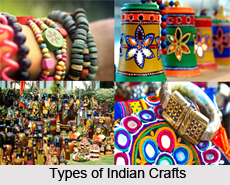 Types of Indian crafts have undergone transformation over the years and the proficiency of construction has not altered to a great extent. Indian crafts are highly acclaimed throughout the world for their aesthetic appeal and magnificence. The diverse cultural traditions of India have enabled the accomplishment of producing various kinds of crafts. The crafts are composed of different materials, themes and proficiencies. Works on woodwork, pottery, hand looms, terracotta, paintings, beadwork, jewellery and embroidery etc have survived through centuries with fewer changes.
Types of Indian crafts have undergone transformation over the years and the proficiency of construction has not altered to a great extent. Indian crafts are highly acclaimed throughout the world for their aesthetic appeal and magnificence. The diverse cultural traditions of India have enabled the accomplishment of producing various kinds of crafts. The crafts are composed of different materials, themes and proficiencies. Works on woodwork, pottery, hand looms, terracotta, paintings, beadwork, jewellery and embroidery etc have survived through centuries with fewer changes.
Bubblegram Craft of India
A bubblegram is a three dimensional image which is composed of points and remains suspended in a medium, usually a plastic block. Laser bubble-gram is in vogue. Crossing lasers in `appropriately-doped` plastic, which may cause a chemical reaction through heat or `photonic` inflammation makes these images. Such crafts are manufactured in several lanes of Kolkata and Mumbai.
Clay Craft of India
The origin of clay crafts in the country dates back to as early as the Indus Valley Civilisation. The Indian states of Himachal Pradesh, Uttar Pradesh, Gujarat, West Bengal and Rajasthan are renowned for their diverse form of clay crafts. The terracotta crafts of West Bengal, `kagzi` or paper pottery made in Alwar region of Rajasthan and `khurja` pottery of Uttar Pradesh are quite popular. During the Sultanate period in Delhi and Uttar Pradesh, India proceeded with its own manufactory of blue pottery.
Stone Craft of India
The art of sculpture is the poetic expression of stone craft. Sculptures of deities, decorative for house interiors, modelled on classical prototypes, continue to be made in every nook and corner of India. In the interiors of India such sculptures and exquisite figures are carved in relief with details engraved in fine lines. These objects are handmade artistic work made using hammer and chisels. Madhya Pradesh, Bihar, Orissa and Rajasthan are well-known centres of production of beautiful stone crafts.
Glass craft of India
As early as 800 B.C., i.e, at the time when the Yajur Veda was composed, glass craft was very popular. It is evident from the archaeological findings at Basti in Uttar Pradesh that glassware is about 2000 years old. The way glass is prepared transformed into various shapes is remarkable. Various decorative products like chandeliers, glass lamps, hanging lamp shades, glass lanterns, glass jewelleries like bangles and many other products are manufactured in different portions of India.
Metal Craft of India
Metal crafts in India include the numerous products which are made with the aide of several metals like gold, silver, bronze, brass, copper and bell metal. Silver filigree work of Andhra Pradesh and Orissa, brassware of Rajasthan, Orissa and other Indian states, `dokra` metal crafts of Orissa, West Bengal and Madhya Pradesh, metal enamelled work of Himachal Pradesh, Gujarat and Uttar Pradesh and marvellous metal crafts of bell metal manufactured in Kerala, Bihar, Tripura and Assam are worth mentioning.
Lac Craft of India
The states of Gujarat, Andhra Pradesh, Jharkhand, West Bengal, Punjab, Rajasthan and Karnataka specialise in the production of magnificent lac crafts like bangles, utensils and decorative products. Lac industry has been growing since ancient times and over the years; many adept artisans have emerged throughout the country. Lac work is applied to furniture and other decorative items.
Horn and Bone Craft of India
The craftsmen of states like Kerala, Karnataka, Uttar Pradesh and the Gajapati district of Orissa are engaged in crafting various horn and bone crafts like walking sticks, pen stands, paper weights, snuff boxes, table lamps, lamp shades and many more.
Ivory Craft of India
Crafts involving ivory crafting is popular in the states like Kerala, Punjab, Delhi, Gujarat, Rajasthan and West Bengal. The ivory carvers of Jaipur , Bengal and Delhi are known for their engraved models of `ambari hathi` or processional elephant, bullock carts, sandals , caskets, book covers, and palanquins. Craftsmen of Gujarat carve exquisite human figures as also images of deities. Uttar Pradesh is famous for its ivory products of deities, dancing figures and decorative plaques.
Leather Craft of India
India is famous for its leather products. The state of Uttar Pradesh is an important source for finished leather and leather products. The tanneries in Kanpur are known all over the world for the finest quality leather tanned by them. Kanpur and Agra in Uttar Pradesh are the two renowned production centres for leather items.
Wood Craft of India
Indian woodcrafts have existed in the nation ever since ancient periods. The craft of manufacturing products with the help of wood was practised even prior to the stone sculptural age. Mainpuri region of Uttar Pradesh, Gujarat, Karnataka, Kerala and Jammu and Kashmir are some of the Indian states which are famous for their woodcrafts. Even Rajasthan is noted for its carved sandalwood and rosewood besides silhouetting the industrial horizon with heavy ornamental furniture.
Paper Craft of India
The tradition of the paper craft in India is fairly old. The paper industry was located mainly in Patna, Delhi, Rajgir, Awadh, Ahmedabad, Gaya and Shahzadpur (near Allahabad). Since the paper is one of the easily perishable materials, the traditions of the paper craft have been left unrecorded.
Other Crafts of India
Weaving and dyeing crafts, pottery crafts, tarakashi crafts, bamboo and cane crafts, shell crafts, papier mache crafts, `tarakashi` crafts, `kiritams` or theatre crafts are some of the other significant crafts of India. The crafts of India not only provide the daily needs of the people, but are also utilized for decorative and religious ceremonies in India. There are varieties of crafts available in India. They are exquisite and delicate, providing new definitions to the Indian crafts and artefacts. There are several sub categories, which include bubblegram, glass blowing, glass bead making, stained glass, mosaics and pottery.
Indian Handicraft Industry
Indian handicraft industry is in engaged in the production of wood carvings, delicate ivories, brocades, glazed potteries, jewelleries, shawls, fine silks, silver works and much more. These traditional handicrafts of India have been patronized by kings and wealthy people and purchased by merchants for the admirers of other countries. The artistic handicraft industries have been established mostly in the provincial capitals or major court towns in the past.
In India some specific regions have been famous for exquisite products since a long period. Brocades of Ahmedabad, Varanasi and Murshidabad, silks of Varanasi, Surat, Mysore, Lucknow and Ahmedabad are very popular. Kashmir made shawls and carpets are also very renowned throughout the world. Glass bangles made at Firozabad are world famous. Enamelled jewellery of Jaipur is simply matchless. The enamelled work is also done on gold, copper and silver in Lucknow, Srinagar, Varanasi, Delhi and Alwar. Moreover, engraved brassware from Moradabad, Jaipur and Varanasi has a good market across the country.
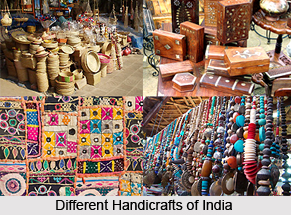 Ivory and stone carving specifically on marble is traditional at several centres in cities like Jaipur and Delhi. Carving of sandal wood in Mysore is really charming and artistic. The traditional handicraft industry of India has brought pride to the country since several centuries. However, the seizure of the country by the British had badly affected the handicraft industry of India. Industrialization and the development in the communication system at that point of time further eliminated the handicraft industry to a large extent. Machine made foreign goods penetrated into each and every corner of the rural India.
Ivory and stone carving specifically on marble is traditional at several centres in cities like Jaipur and Delhi. Carving of sandal wood in Mysore is really charming and artistic. The traditional handicraft industry of India has brought pride to the country since several centuries. However, the seizure of the country by the British had badly affected the handicraft industry of India. Industrialization and the development in the communication system at that point of time further eliminated the handicraft industry to a large extent. Machine made foreign goods penetrated into each and every corner of the rural India.
But, after the independence of the country, the Government of India took appropriate measures for protecting the indigenous handicraft industry. The government provided financial assistance as well as all other facilities like providing expert advice to the workers. Huge efforts have been made to rehabilitate the artisans associated with the handicraft industry of India.
